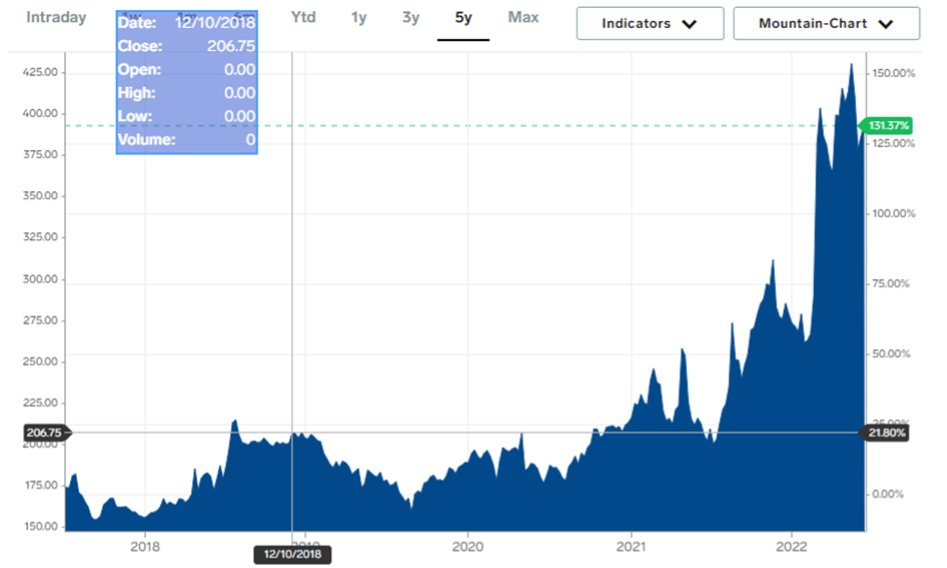Wheat has been one of the most closely watched commodities since the outbreak of the war in Ukraine, when its price climbed to 14-year highs in a relatively short period.* Another significant factor that pushed its price up was India's announcement in mid-May this year that it would suspend exports of the grain. Despite a slight decline in recent weeks, the price of the commodity continues to hold high.
Generally speaking, global prices of major cereals are quite sensitive to any news from major producers, weather fluctuations, increases in the cost of cultivation, etc. The price of wheat has risen significantly this year, mainly due to falling world stocks and reduced exports from Ukraine, which has been in a state of war since the end of February. According to available data, up to 25 per cent of global wheat exports are expected to come from the warring countries of Ukraine and Russia. The Russian attack on Ukraine and its related consequences have thus caused a global shortage of this commodity and concerns about the security of food supplies (of which wheat is a part) in developing countries.
India stopped exports
After India banned commodity exports from the country a month ago, when its harvest was hit by a heat wave, the price of wheat reached new highs. Following the opening of the market in Europe, it rose to EUR 435 per tonne. It was pushed up by negative investor sentiment, which had relied on India, the world's second-largest wheat producer, after Ukraine blocked exports. Since then, the price of the commodity has fallen slightly, but still remains relatively high. According to Businessinsider.com, the price reached EUR 397 per tonne on Thursday.

Graph: Wheat price development over the last years. (Source: businessinsider.com)
Developing countries also face problems
According to information published in a recent report by the Food and Agriculture Organization of the United Nations (FAO), some countries in West Africa have seen new record high cereal prices, mainly due to rising demand and lower cross-border flows of commodities. Prices of various products, including wheat flour, are also rising in the coastal countries of the African continent, where conflicts persist, and the local economies are struggling with weakening currencies. These include Sudan, South Sudan, countries in the Far East and Sri Lanka.
Rice as an alternative to wheat
The scarcity of the commodity and the sharp rise in its price are forcing countries to search for alternatives to use in place of wheat. Japan's food industry is now concentrating on making flour from rice, which is plentiful in Japan, does not need to be imported and is not as susceptible to price fluctuations.
Price pressure persists
As the factors that have been pushing up the price of wheat continue to persist, it is likely that the price of this commodity will not start to fall so quickly. It will be quite the opposite. Given rising inflation, the input costs of cultivation, harvest concerns due to the heatwave, and the ongoing supply problem due to the conflict in Ukraine, it is likely that price pressures will intensify in the near future.[1]
* Past performance is no guarantee of future results.
[1] Forward-looking statements are based on assumptions and current expectations, which may be inaccurate, or on the current economic environment, which may change. Such statements are not guarantees of future performance. They involve risks and other uncertainties that are difficult to predict. Results may differ materially from those expressed or implied by any forward-looking statements.